1 Overview
1.1 Scope
1.2 Purpose
2 Terminology (informative)
2.1 Definitions
2.2 Abbreviations
2.3 Acronyms
3 References (informative)
3.1 Display Bus Interface Standard for Parallel Signaling (DBI-2)
3.2 Display Pixel Interface Standard for Parallel Signaling (DPI-2)
3.3 MIPI Alliance Specification for Display Command Set (DCS)
3.4 MIPI Alliance Standard for Camera Serial Interface 2 (CSI-2)
3.5 MIPI Alliance Specification for D-PHY (D-PHY)
4 DSI Introduction
4.1 DSI Layer Definitions
4.2 Command and Video Modes
4.2.1 Command Mode
4.2.2 Video Mode Operation
4.2.3 Virtual Channel Capability
5 DSI Physical Layer
5.1 Data Flow Control
5.2 Bidirectionality and Low Power Signaling Policy
5.3 Command Mode Interfaces
5.4 Video Mode Interfaces
5.5 Bidirectional Control Mechanism
5.6 Clock Management
5.6.1 Clock Requirements
5.6.2 Clock Power and Timing
5.7 System Power-Up and Initialization
6 Multi-Lane Distribution and Merging
6.1 Multi-Lane Interoperability and Lane-number Mismatch
6.1.1 Clock Considerations with Multi-Lane
6.1.2 Bidirectionality and Multi-Lane Capability
6.1.3 SoT and EoT in Multi-Lane Configurations
7 Low-Level Protocol Errors and Contention
7.1 Low-Level Protocol Errors
7.1.1 SoT Error
7.1.2 SoT Sync Error
7.1.3 EoT Sync Error
7.1.4 Escape Mode Entry Command Error
7.1.5 LP Transmission Sync Error
7.1.6 False Control Error
7.2 Contention Detection and Recovery
7.2.1 Contention Detection in LP Mode
7.2.2 Contention Recovery Using Timers
7.3 Additional Timers
7.3.1 Turnaround Acknowledge Timeout (TA_TO)
7.3.2 Peripheral Reset Timeout (PR_TO)
7.4 Acknowledge and Error Reporting Mechanism
8 DSI Protocol
8.1 Multiple Packets per Transmission
8.2 Packet Composition
8.3 Endian Policy
8.4 General Packet Structure
8.4.1 Long Packet Format
8.4.2 Short Packet Format
8.5 Common Packet Elements
8.5.1 Data Identifier Byte
8.5.2 Error Correction Code
8.6 Interleaved Data Streams
8.6.1 Interleaved Data Streams and Bidirectionality
8.7 Processor to Peripheral Direction (Processor-Sourced) Packet Data Types
8.8 Processor-to-Peripheral Transactions – Detailed Format Description
8.8.1 Sync Event (H Start, H End, V Start, V End), Data Type = XX 0001 (0xX1)
8.8.2 EoTp, Data Type = 00 1000 (0x08)
8.8.3 Color Mode Off Command, Data Type = 00 0010 (0x02)
8.8.4 Color Mode On Command, Data Type = 01 0010 (0x12)
8.8.5 Shutdown Peripheral Command, Data Type = 10 0010 (0x22)
8.8.6 Turn On Peripheral Command, Data Type = 11 0010 (0x32)
8.8.7 Generic Short WRITE Packet with 0, 1, or 2 parameters, Data Types = 00 0011 (0x03), 01 0011 (0x13), 10 0011 (0x23), Respectively
8.8.8 Generic READ Request with 0, 1, or 2 Parameters, Data Types = 00 0100 (0x04), 01 0100 (0x14), 10 0100(0x24), Respectively
8.8.9 DCS Commands
8.8.10 Set Maximum Return Packet Size, Data Type = 11 0111 (0x37)
8.8.11 Null Packet (Long), Data Type = 00 1001 (0x09)
8.8.12 Blanking Packet (Long), Data Type = 01 1001 (0x19)
8.8.13 Generic Long Write, Data Type = 10 1001 (0x29)
8.8.14 Loosely Packed Pixel Stream, 20-bit YCbCr 4:2:2 Format, Data Type = 00 1100 (0x0C)
8.8.15 Packed Pixel Stream, 24-bit YCbCr 4:2:2 Format, Data Type = 01 1100 (0x1C)
8.8.16 Packed Pixel Stream, 16-bit YCbCr 4:2:2 Format, Data Type = 10 1100 (0x2C)
8.8.17 Packed Pixel Stream, 30-bit Format, Long Packet, Data Type = 00 1101 (0x0D)
8.8.18 Packed Pixel Stream, 36-bit Format, Long Packet, Data Type = 01 1101 (0x1D)
8.8.19 Packed Pixel Stream, 12-bit YCbCr 4:2:0 Format, Data Type = 11 1101 (0x3D)
8.8.20 Packed Pixel Stream, 16-bit Format, Long Packet, Data Type 00 1110 (0x0E)
8.8.21 Packed Pixel Stream, 18-bit Format, Long Packet, Data Type = 01 1110 (0x1E)
8.8.22 Pixel Stream, 18-bit Format in Three Bytes, Long Packet, Data Type = 10 1110 (0x2E)
8.8.23 Packed Pixel Stream, 24-bit Format, Long Packet, Data Type = 11 1110 (0x3E)
8.8.24 DO NOT USE and Reserved Data Types
8.9 Peripheral-to-Processor (Reverse Direction) LP Transmissions
8.9.1 Packet Structure for Peripheral-to-Processor LP Transmissions
8.9.2 System Requirements for ECC and Checksum and Packet Format
8.9.3 Appropriate Responses to Commands and ACK Requests
8.9.4 Format of Acknowledge and Error Report and Read Response Data Types
8.9.5 Error Reporting Format
8.10 Peripheral-to-Processor Transactions – Detailed Format Description
8.10.1 Acknowledge and Error Report, Data Type 00 0010 (0x02)
8.10.2 Generic Short Read Response, 1 or 2 Bytes, Data Types = 01 0001 or 01 0010, Respectively
8.10.3 Generic Long Read Response with Optional Checksum, Data Type = 01 1010 (0x1A)
8.10.4 DCS Long Read Response with Optional Checksum, Data Type 01 1100 (0x1C)
8.10.5 DCS Short Read Response, 1 or 2 Bytes, Data Types = 10 0001 or 10 0010, Respectively
8.10.6 Multiple Transmissions and Error Reporting
8.10.7 Clearing Error Bits
8.11 Video Mode Interface Timing
8.11.1 Transmission Packet Sequences
8.11.2 Non-Burst Mode with Sync Pulses
8.11.3 Non-Burst Mode with Sync Events
8.11.4 Burst Mode
8.11.5 Parameters
8.12 TE Signaling in DSI
9 Error-Correcting Code (ECC) and Checksum
9.1 Packet Header Error Detection/Correction
9.2 Hamming Code Theory
9.3 Hamming-modified Code Applied to DSI Packet Headers
9.4 ECC Generation on the Transmitter
9.5 Applying ECC on the Receiver
9.6 Checksum Generation for Long Packet Payloads
10 Compliance, Interoperability, and Optional Capabilities
10.1 Display Resolutions
10.2 Pixel Formats
10.2.1 Video Mode
10.2.2 Command Mode
10.3 Number of Lanes
10.4 Maximum Lane Frequency
10.5 Bidirectional Communication
10.6 ECC and Checksum Capabilities
10.7 Display Architecture
10.8 Multiple Peripheral Support
10.9 EoTp Support and Interoperability
Annex A Contention Detection and Recovery Mechanisms (informative)
A.1 PHY Detected Contention
A.1.1 Protocol Response to PHY Detected Faults
Annex B Checksum Generation Example (informative)
Annex C Interlaced Video Transmission Sourcing
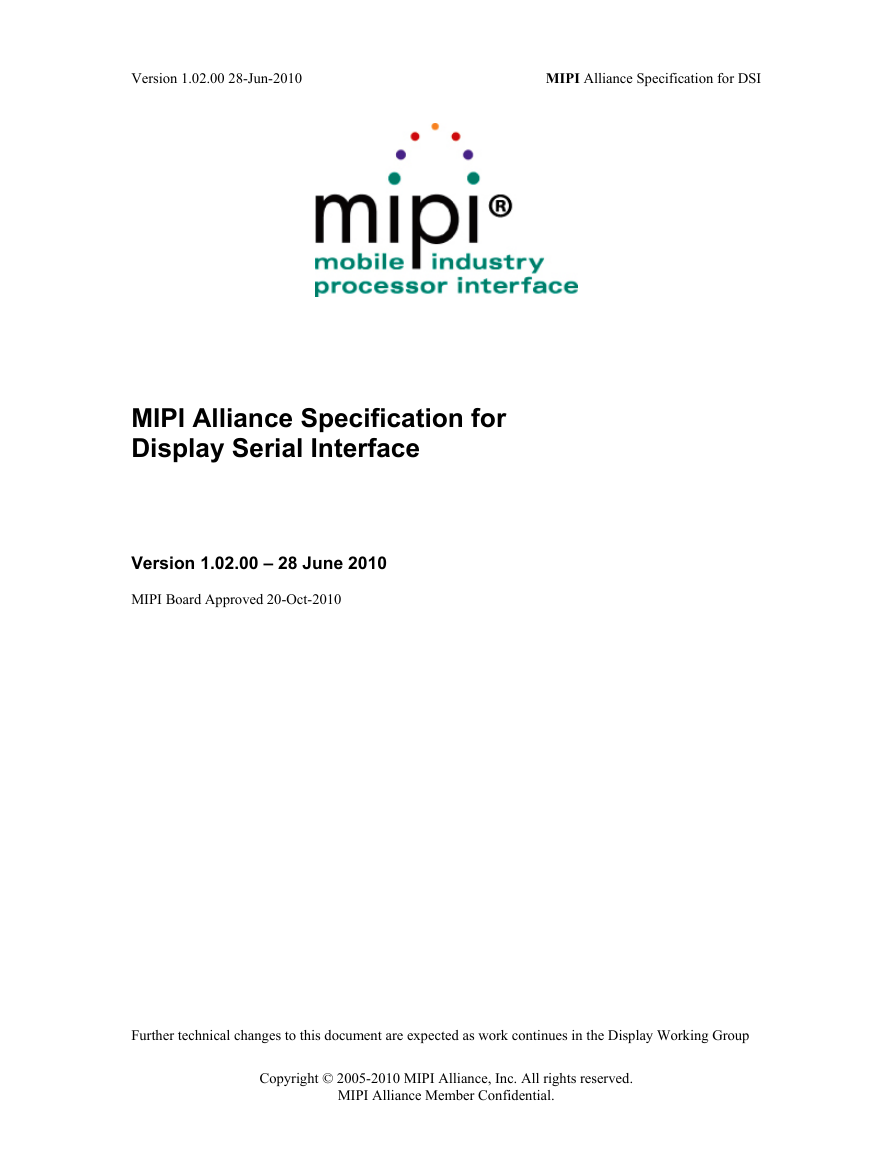
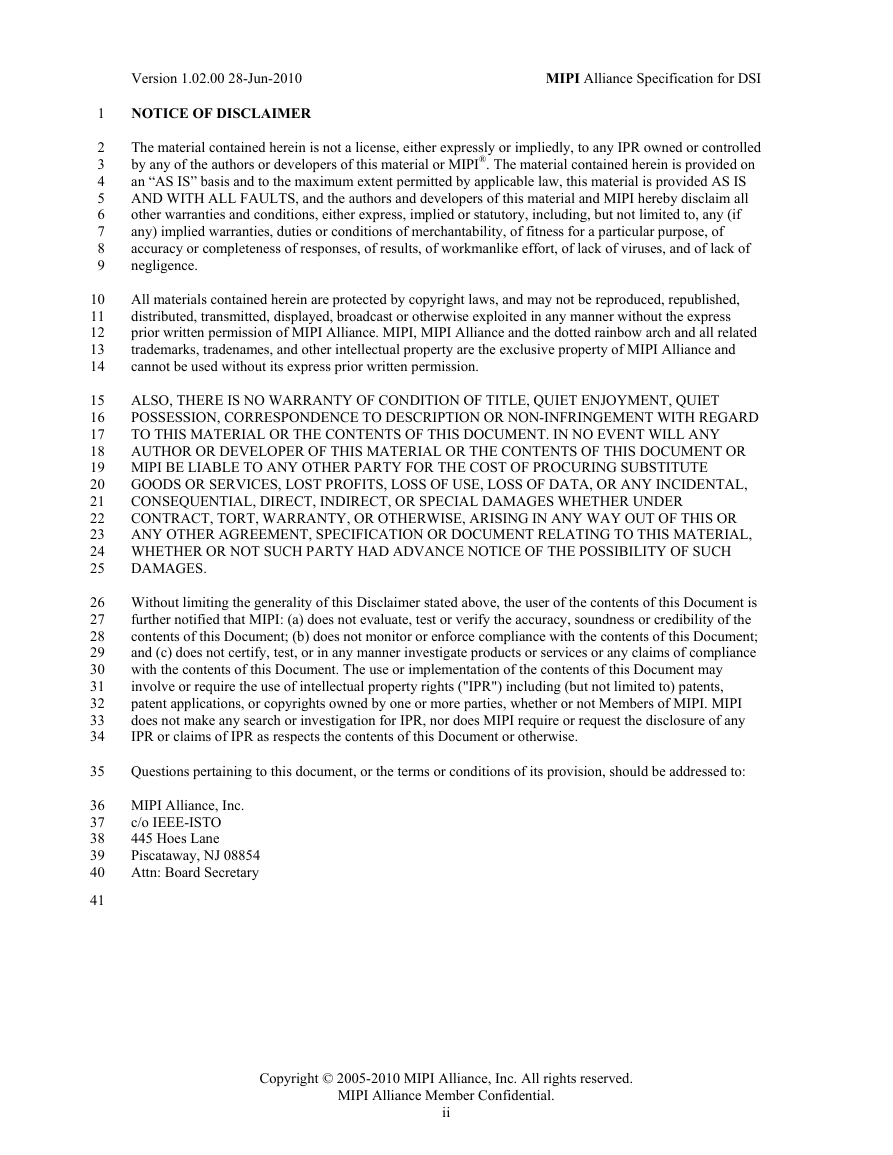
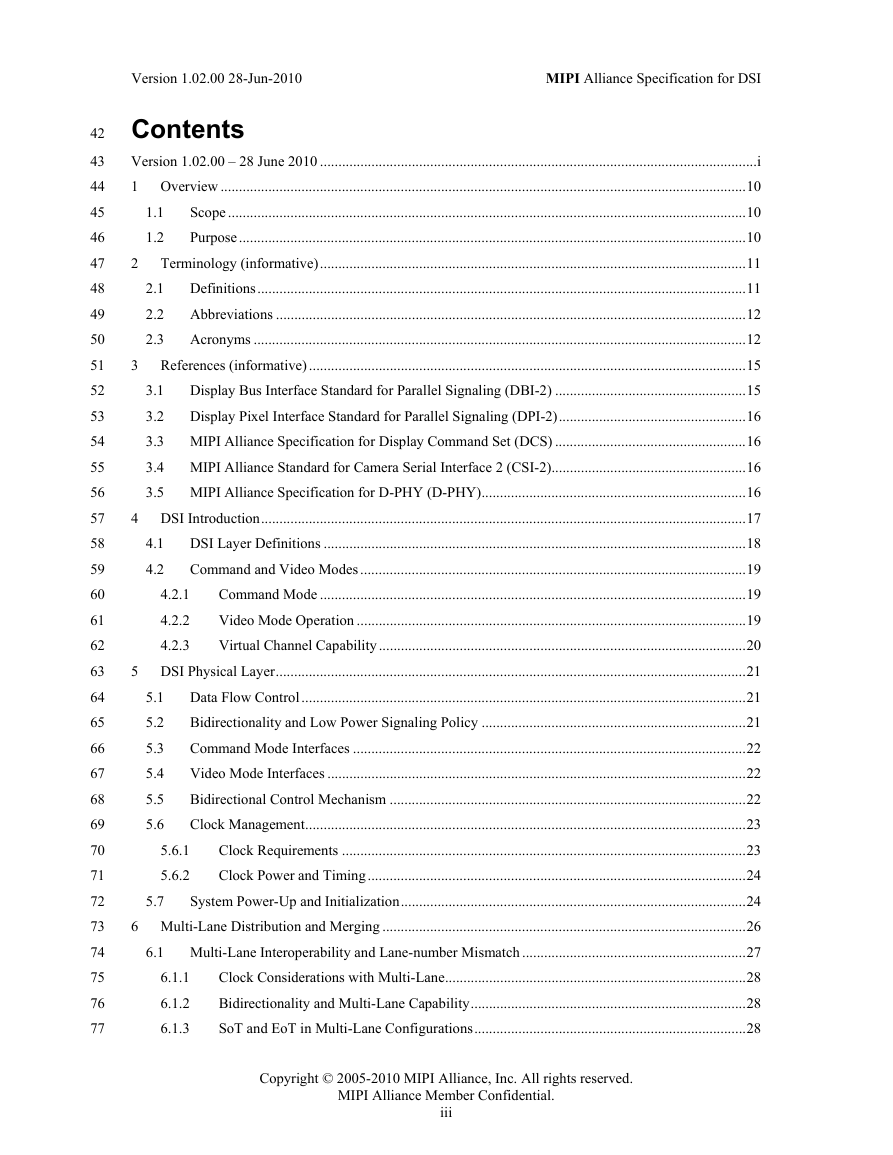
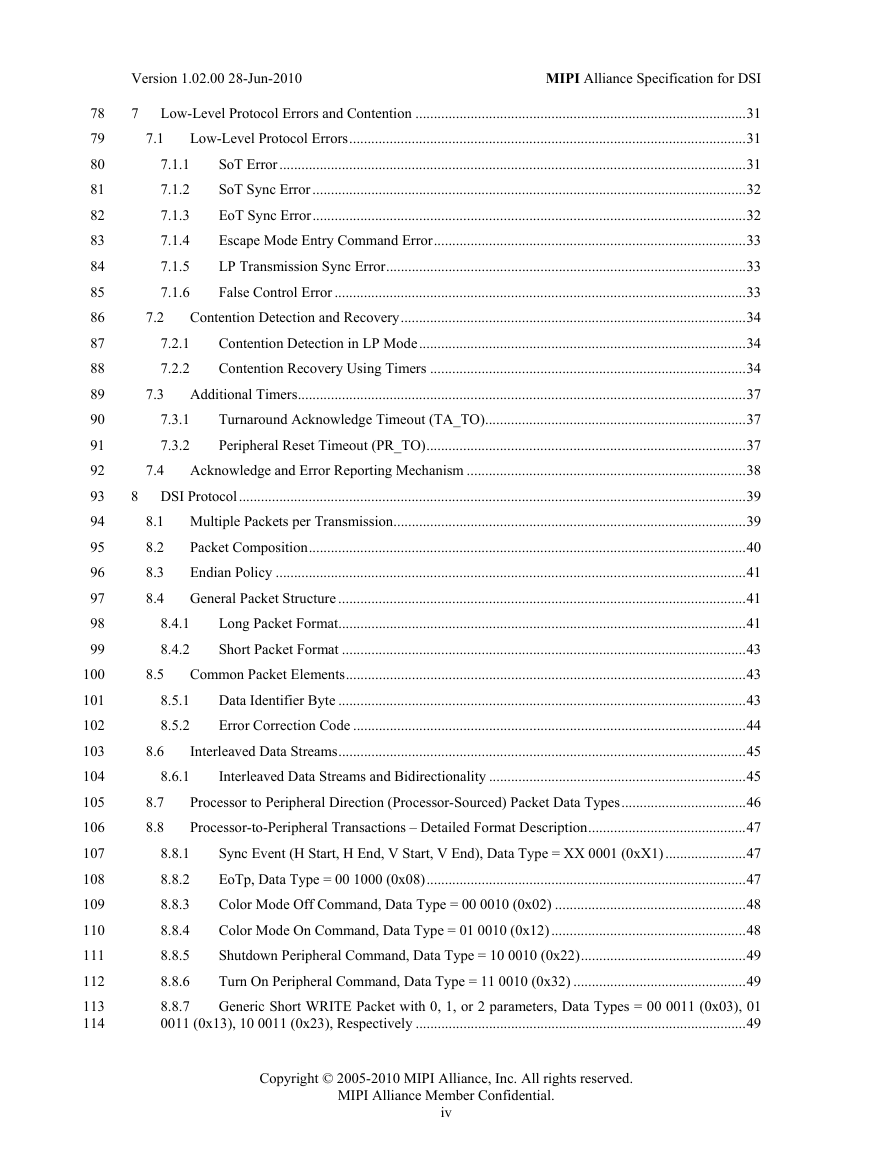
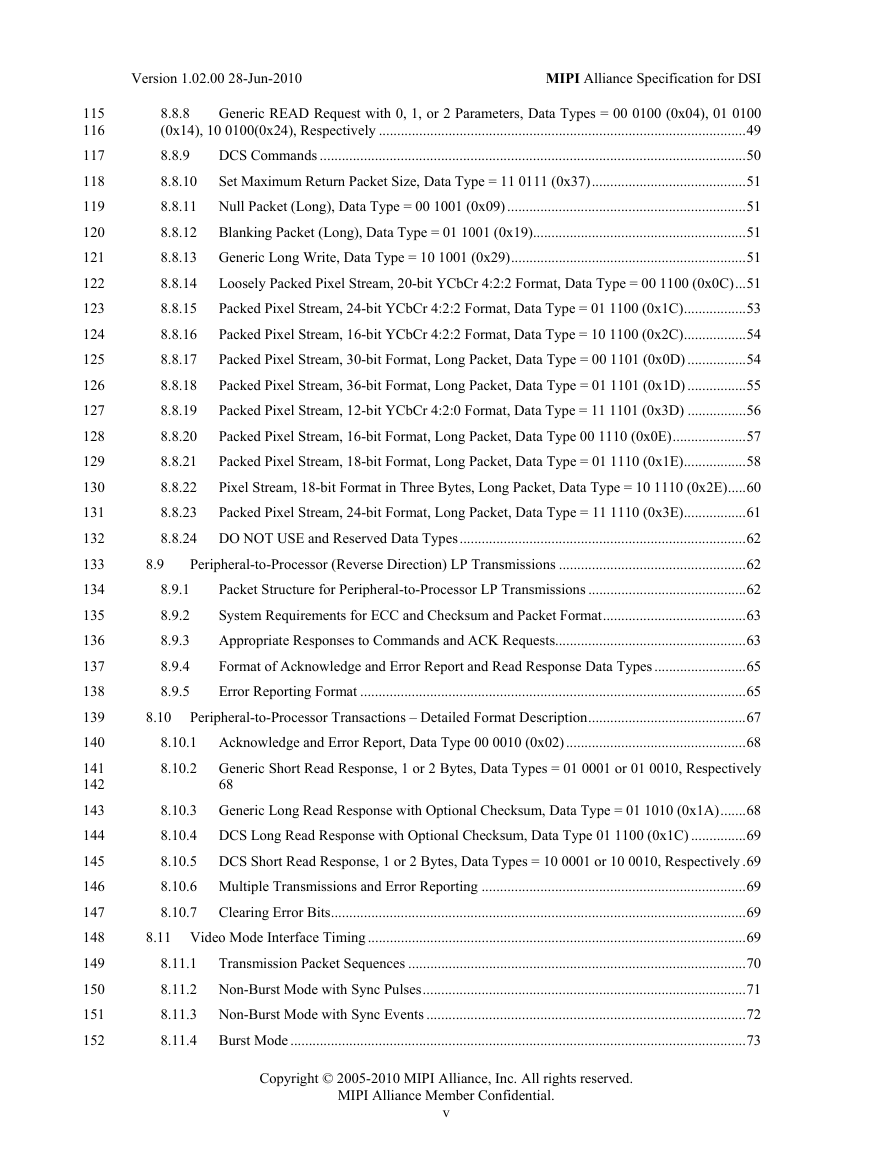

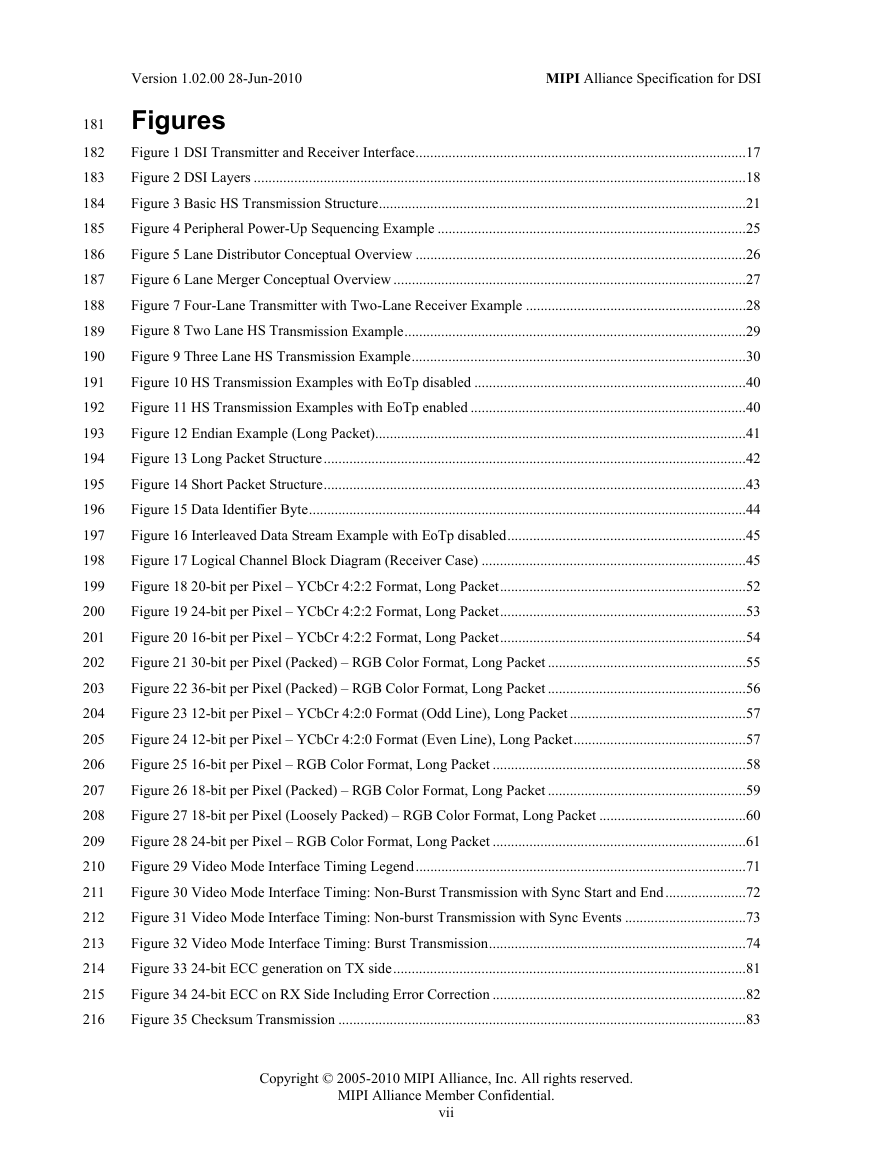
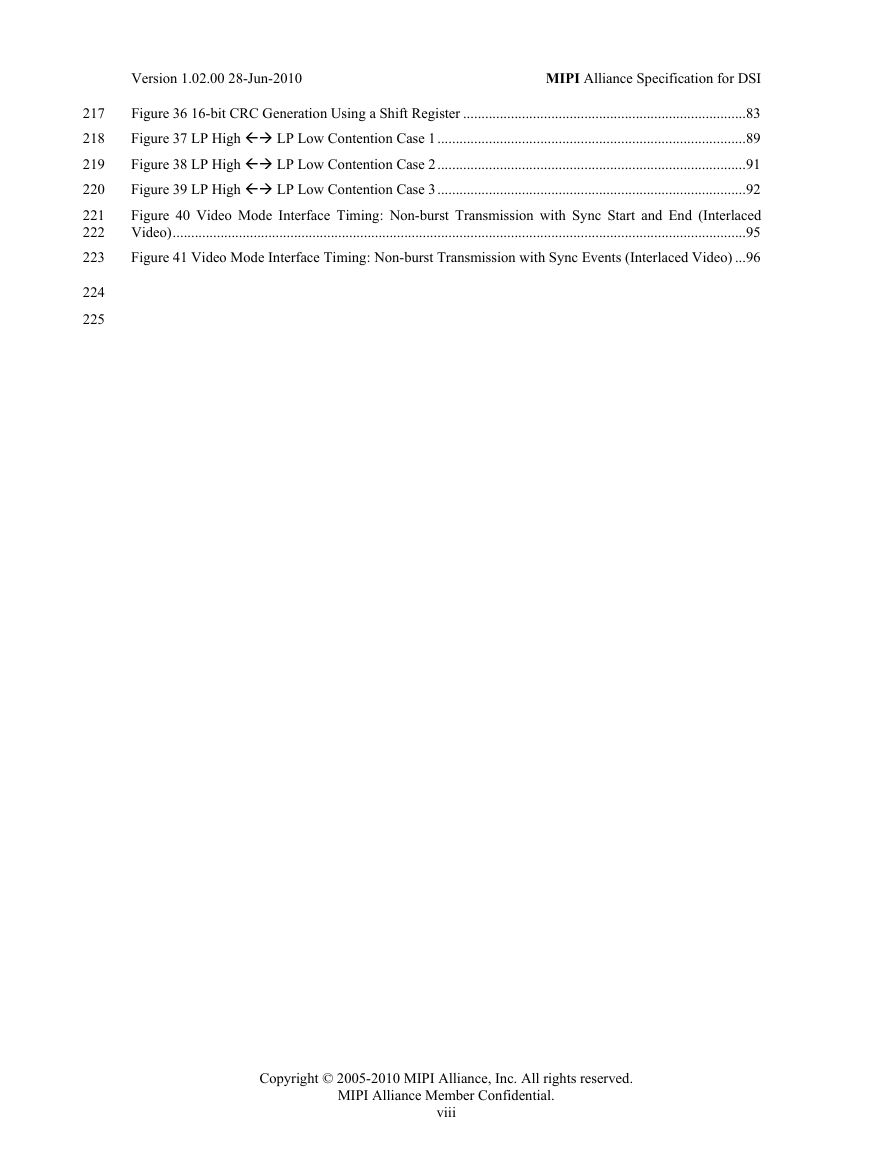








 2023年江西萍乡中考道德与法治真题及答案.doc
2023年江西萍乡中考道德与法治真题及答案.doc 2012年重庆南川中考生物真题及答案.doc
2012年重庆南川中考生物真题及答案.doc 2013年江西师范大学地理学综合及文艺理论基础考研真题.doc
2013年江西师范大学地理学综合及文艺理论基础考研真题.doc 2020年四川甘孜小升初语文真题及答案I卷.doc
2020年四川甘孜小升初语文真题及答案I卷.doc 2020年注册岩土工程师专业基础考试真题及答案.doc
2020年注册岩土工程师专业基础考试真题及答案.doc 2023-2024学年福建省厦门市九年级上学期数学月考试题及答案.doc
2023-2024学年福建省厦门市九年级上学期数学月考试题及答案.doc 2021-2022学年辽宁省沈阳市大东区九年级上学期语文期末试题及答案.doc
2021-2022学年辽宁省沈阳市大东区九年级上学期语文期末试题及答案.doc 2022-2023学年北京东城区初三第一学期物理期末试卷及答案.doc
2022-2023学年北京东城区初三第一学期物理期末试卷及答案.doc 2018上半年江西教师资格初中地理学科知识与教学能力真题及答案.doc
2018上半年江西教师资格初中地理学科知识与教学能力真题及答案.doc 2012年河北国家公务员申论考试真题及答案-省级.doc
2012年河北国家公务员申论考试真题及答案-省级.doc 2020-2021学年江苏省扬州市江都区邵樊片九年级上学期数学第一次质量检测试题及答案.doc
2020-2021学年江苏省扬州市江都区邵樊片九年级上学期数学第一次质量检测试题及答案.doc 2022下半年黑龙江教师资格证中学综合素质真题及答案.doc
2022下半年黑龙江教师资格证中学综合素质真题及答案.doc